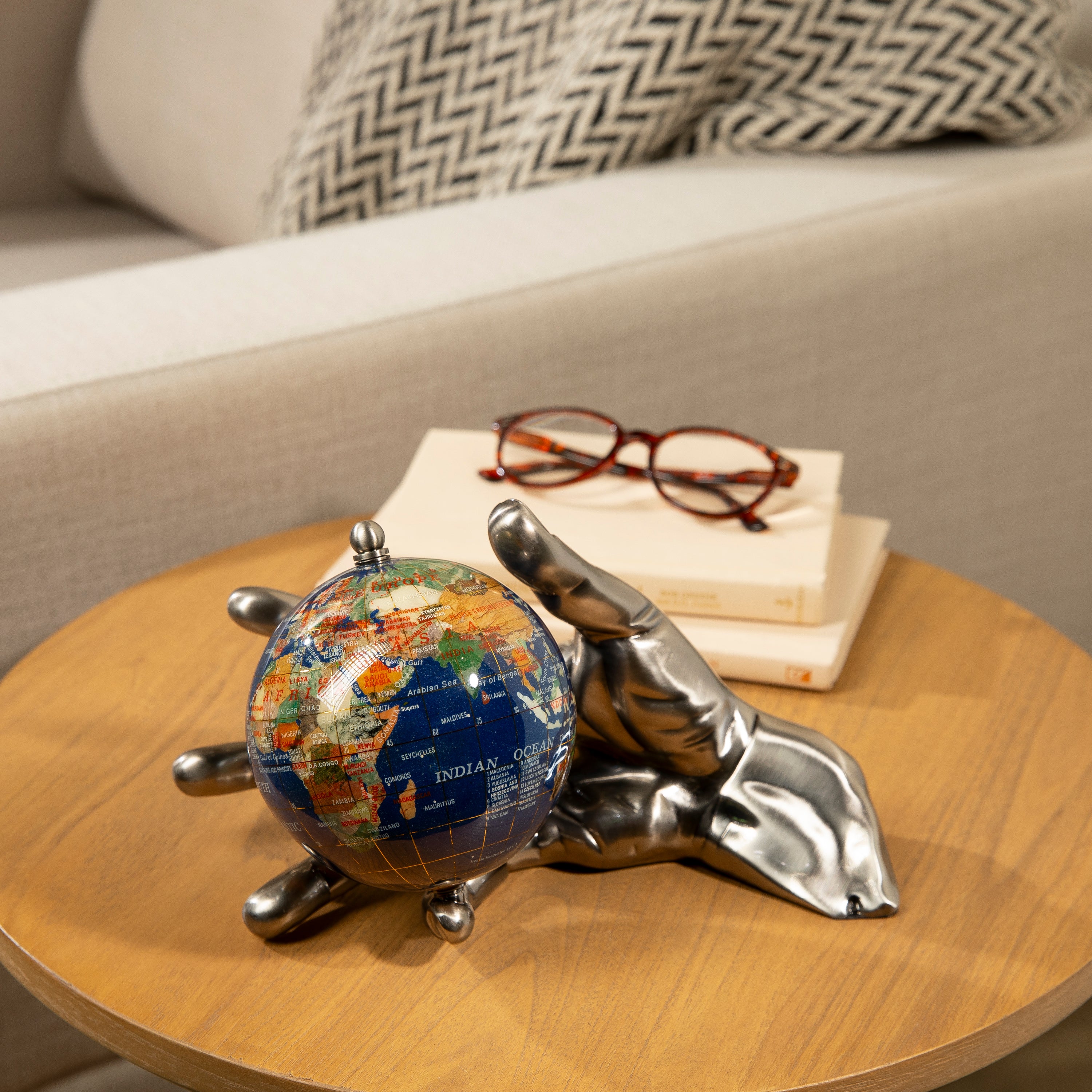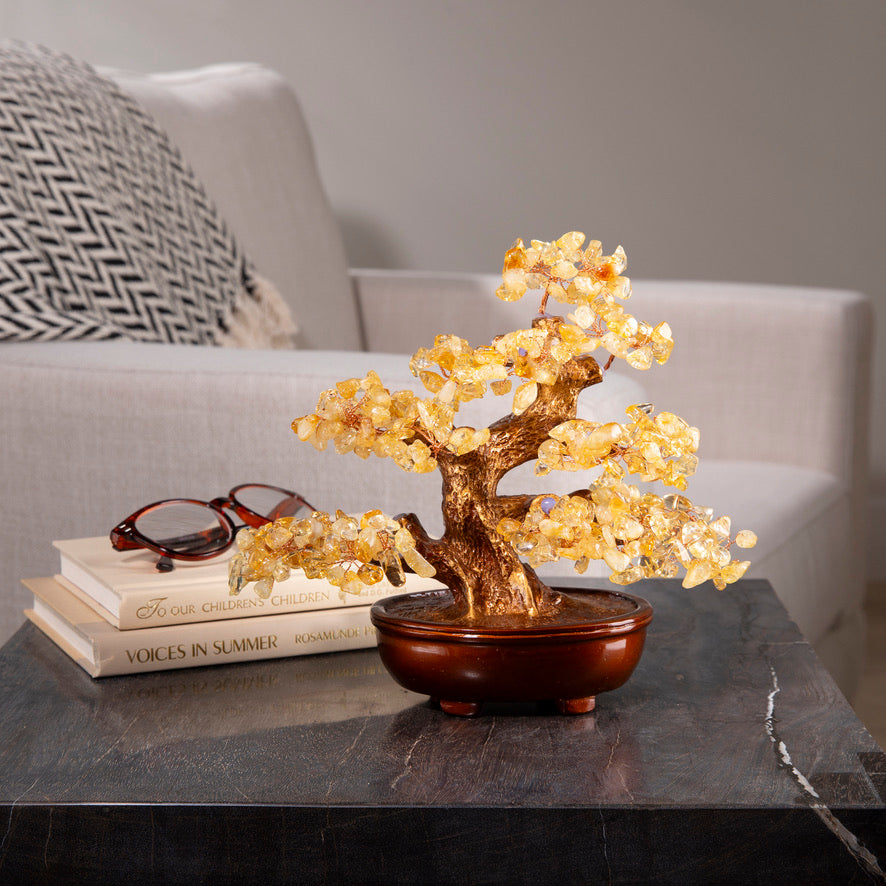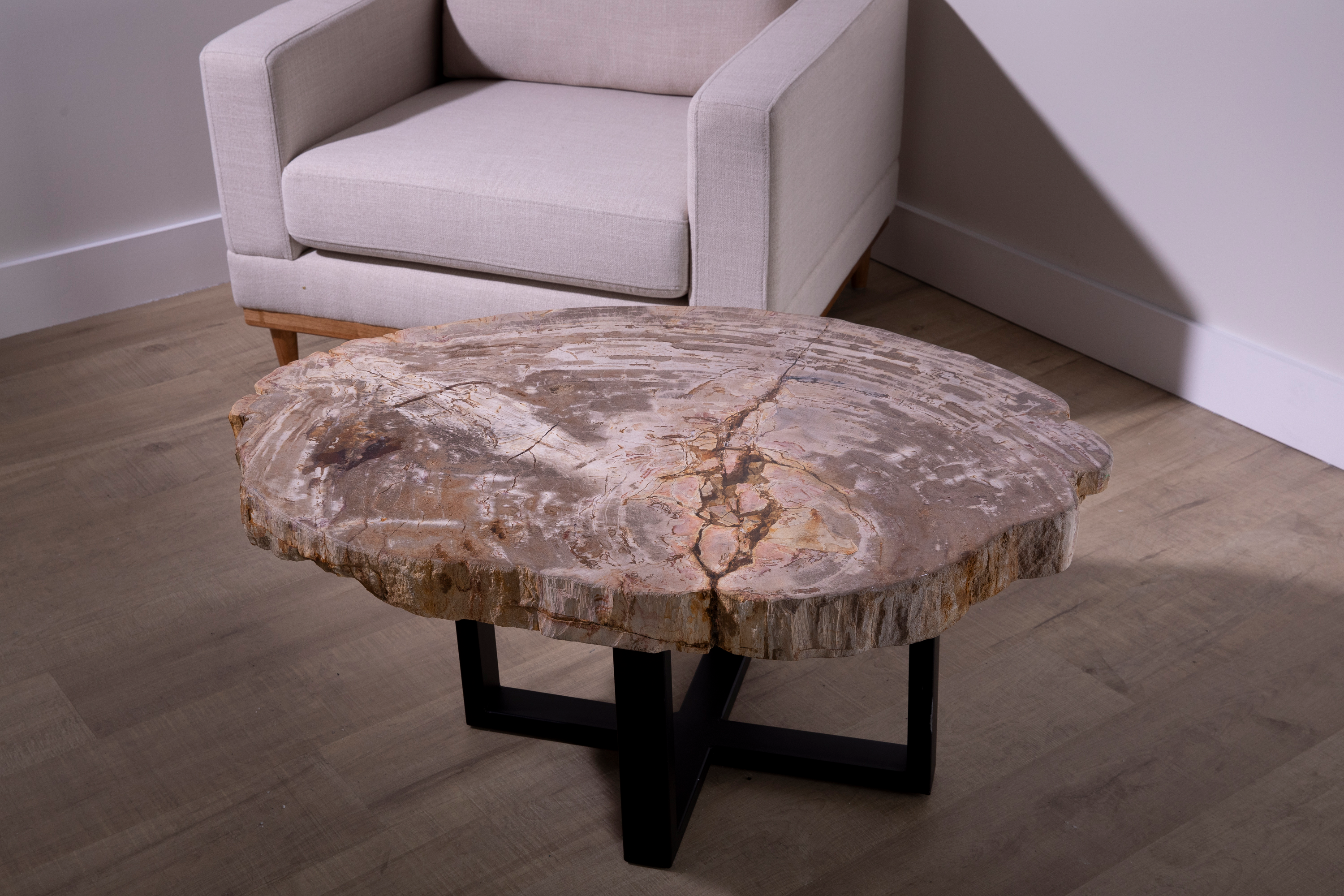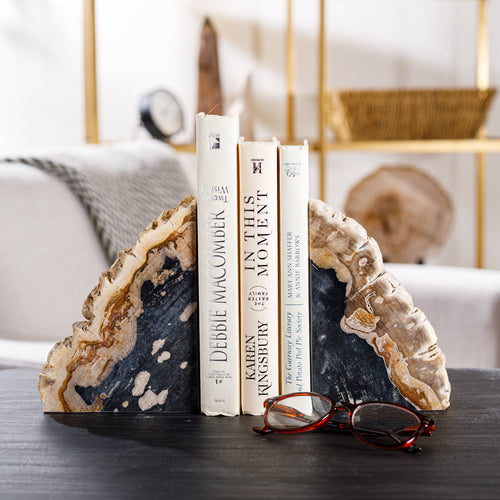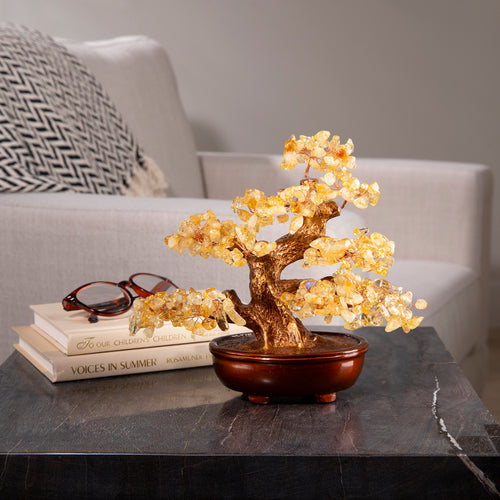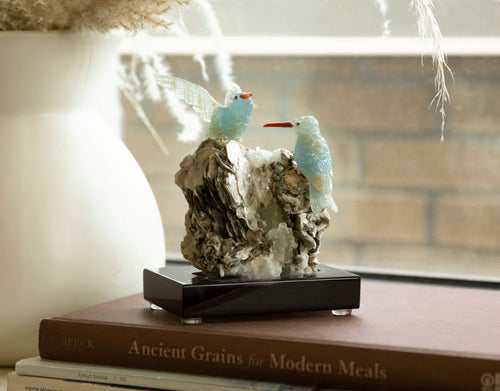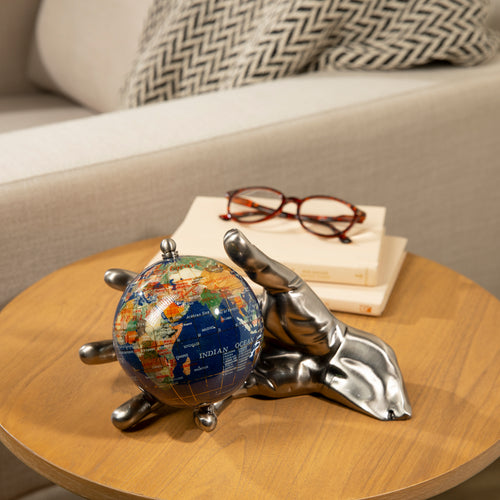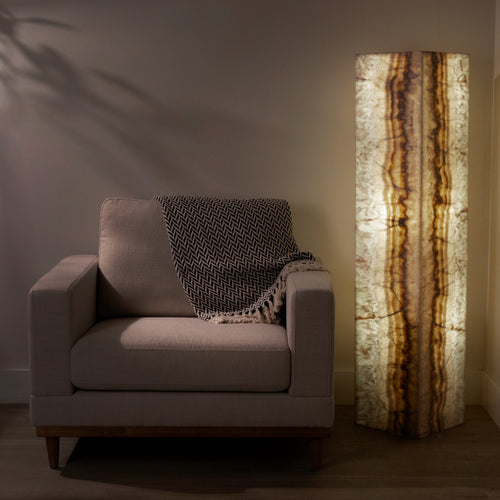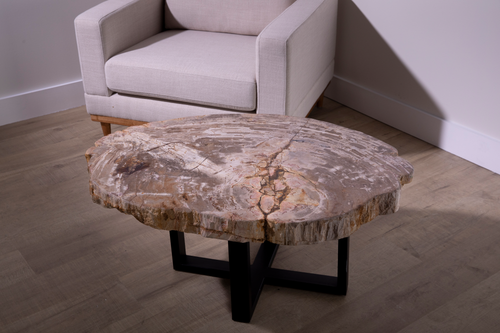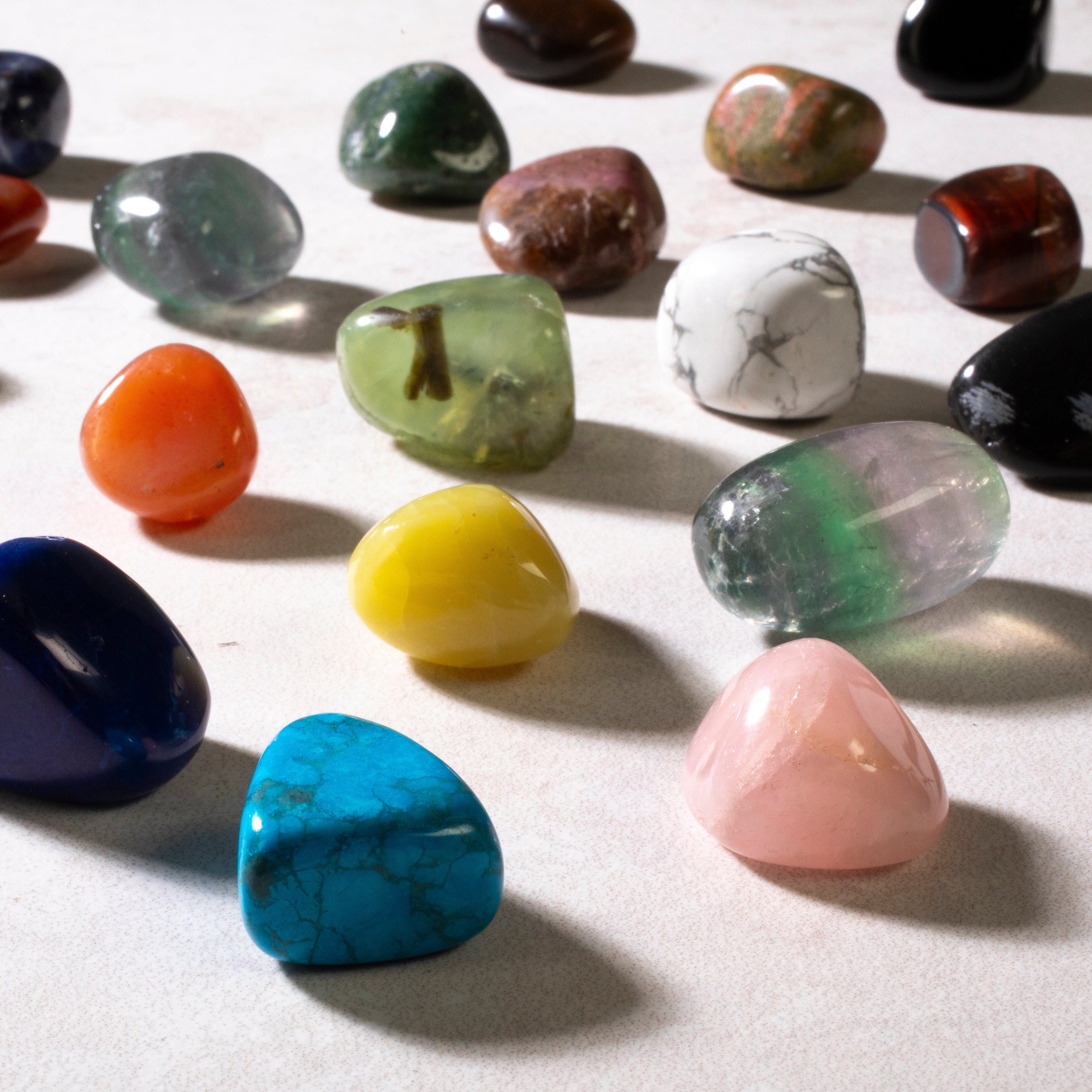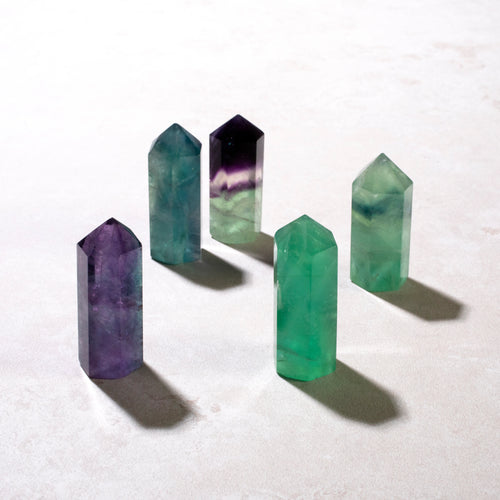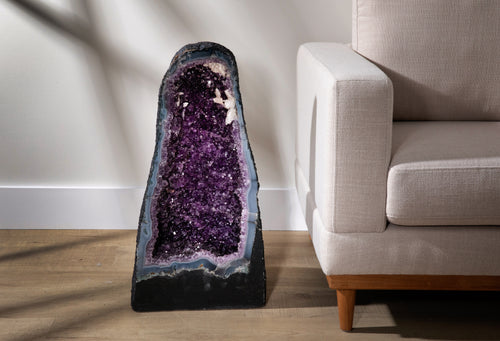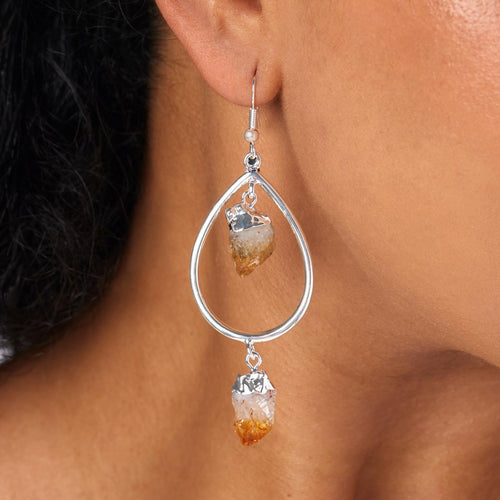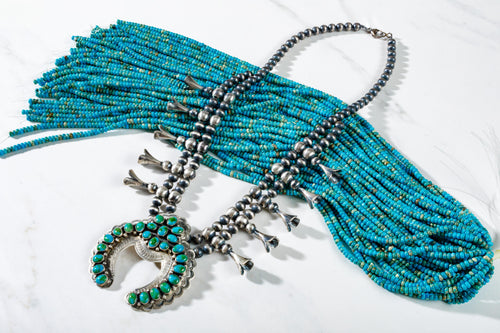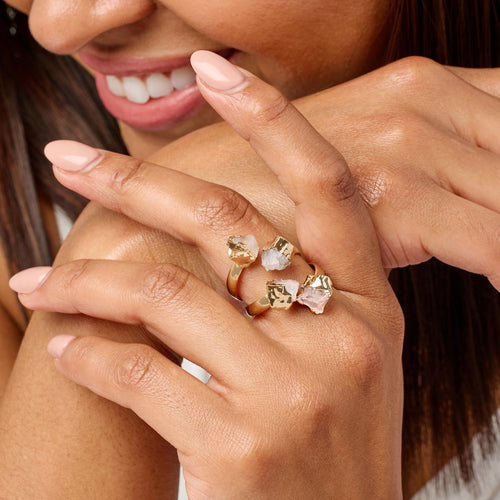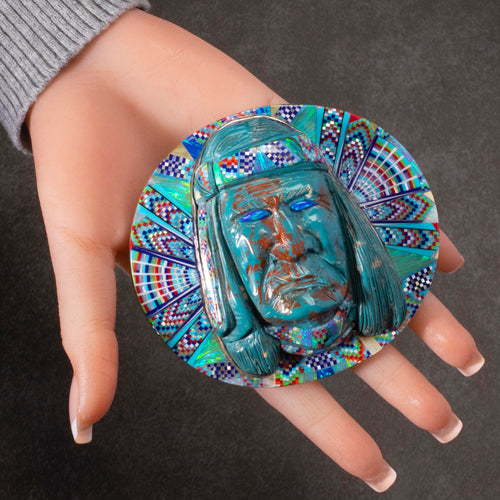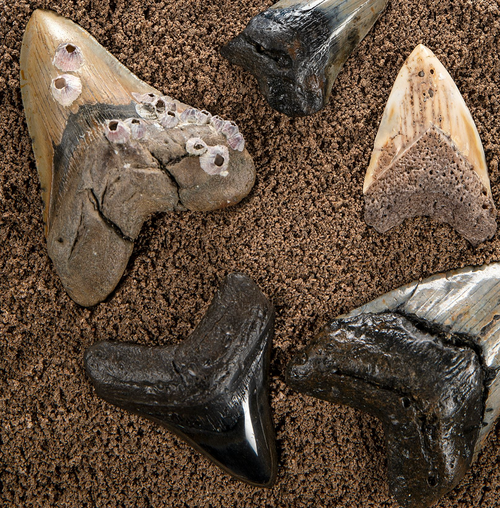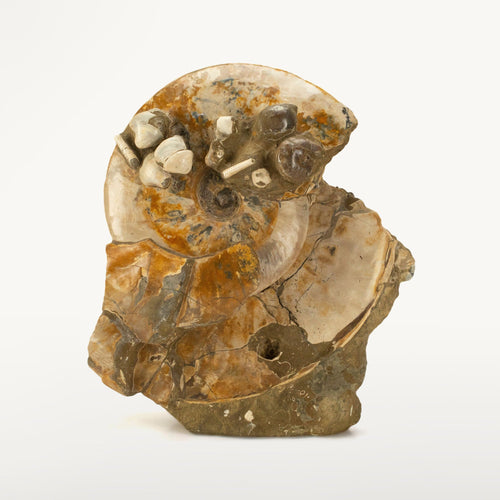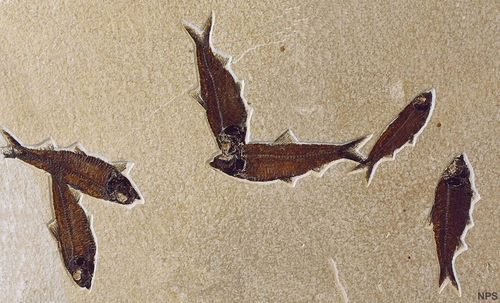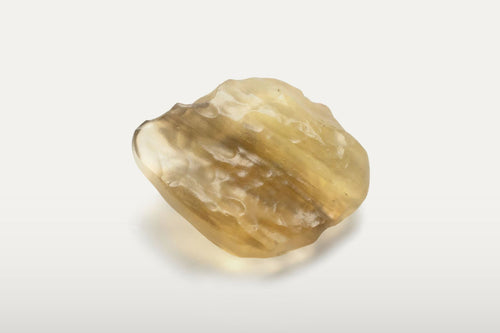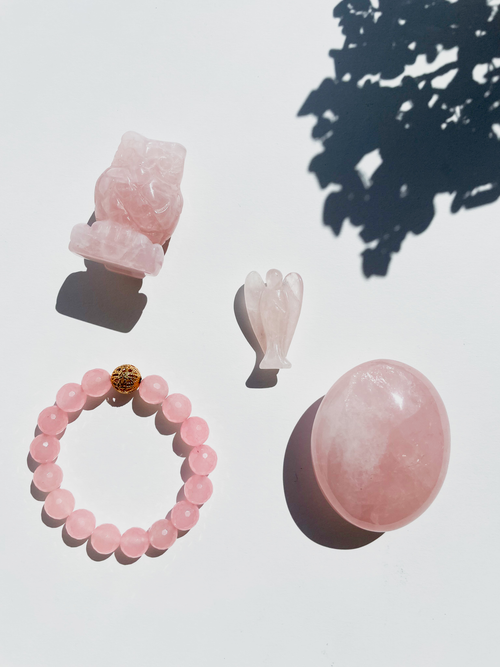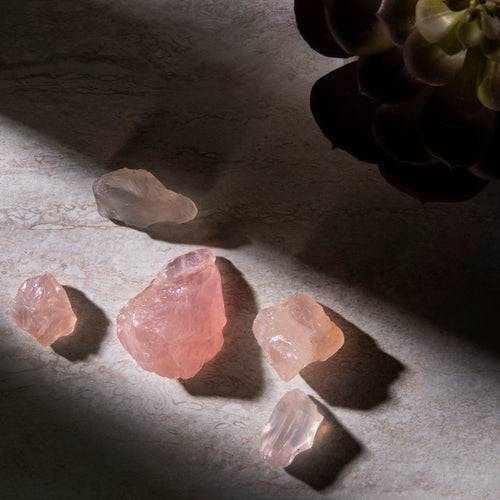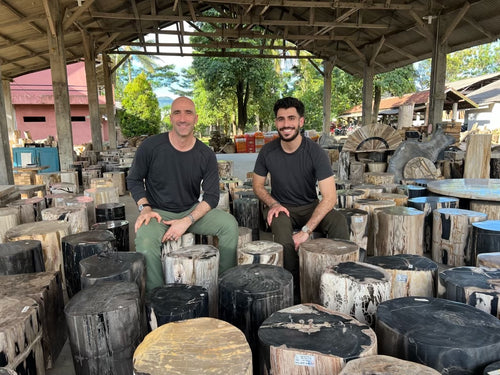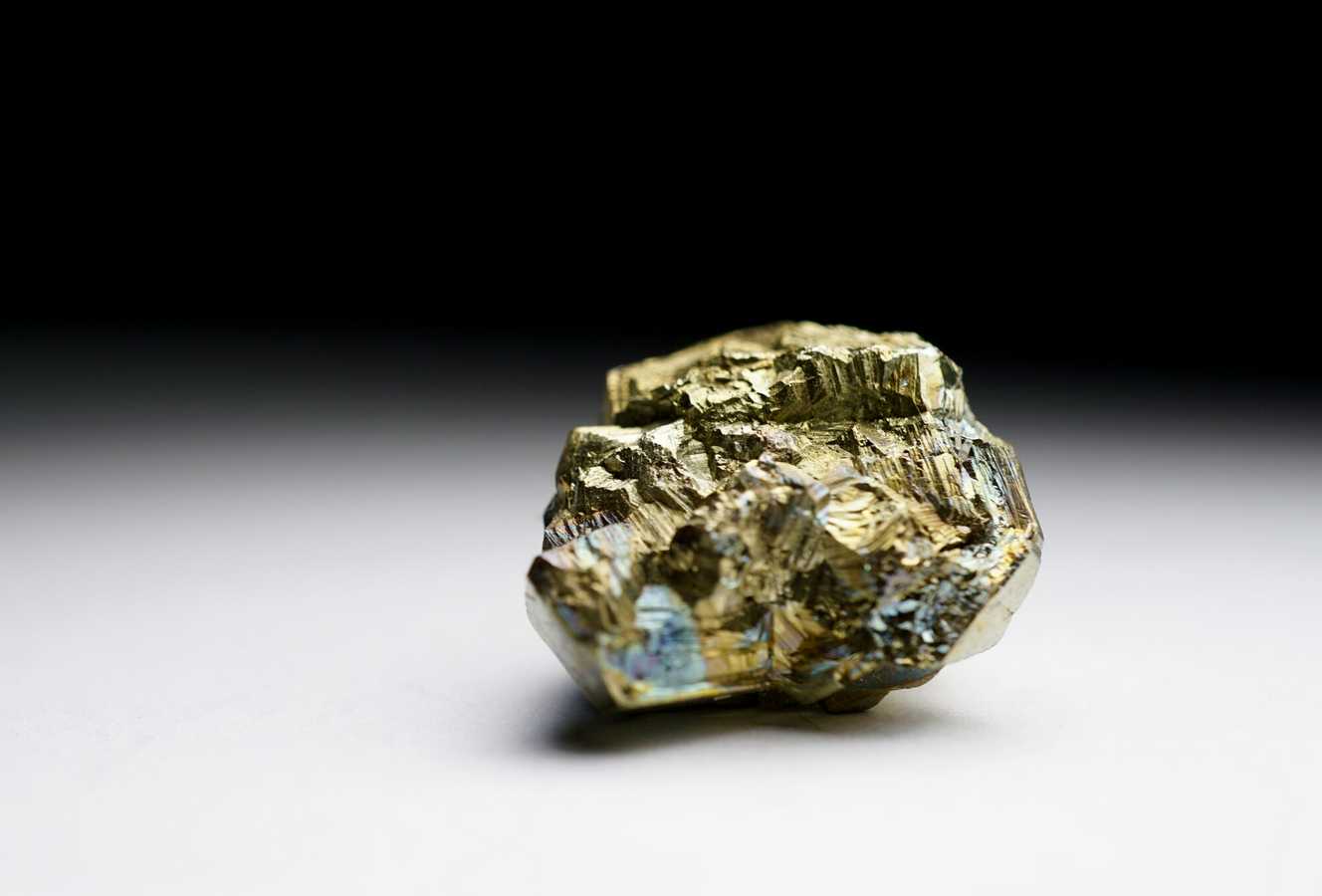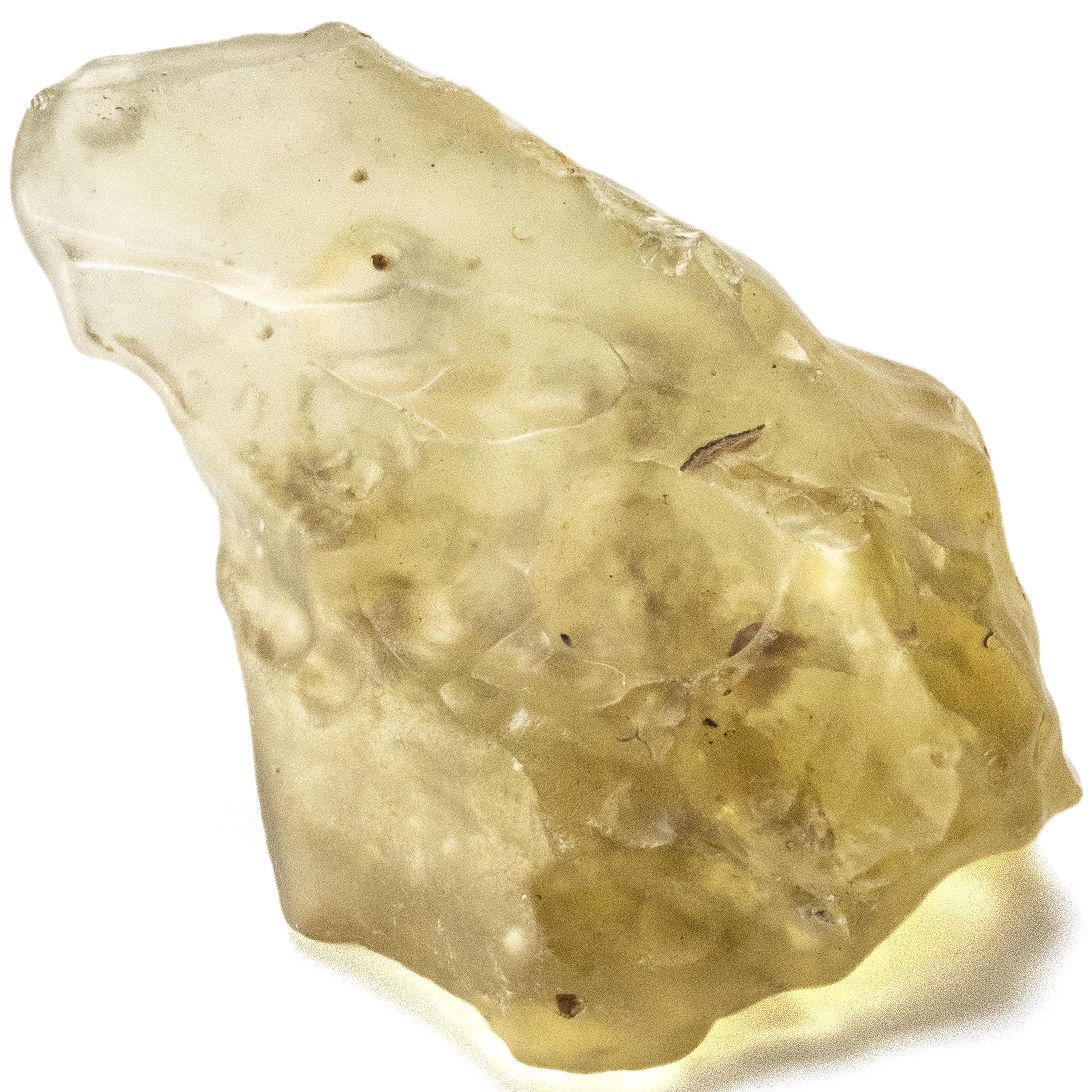
What Is Libyan Desert Glass and How Does It Form?
Libyan Desert Glass, also known as Libyan Gold Tektite, is a rare type of tektite found in the Libyan Desert. Have you ever wondered how it forms, what makes it special and why it's believed to be spiritually significant in some cultures?
In this article, we'll provide answers to those questions.
We sell genuine Libyan Desert Glass. Shop now.
The Appearance and Color of Libyan Desert Glass
Let's start by looking at Libyan Desert Glass' appearance and color as well as the different types geologists have discovered. Libyan Desert Glass is a natural glass.
It isn't formed from volcanic eruptions. It's created when an extraterrestrial object such as a meteorite crashes into Earth. Libyan Desert Glass is usually found in the Libyan Desert within the Libyan Sahara Desert, which is part of northern Africa. There are other locations around the world where scientists have found it, however.
The Libyan Desert Glass that is available in the market these days is available in three different types. There's a golden brownish orange, transparent golden yellow, and translucent honey-yellow.
Compared to other tektites from around the world, Libyan Desert Glass tends to have a higher concentration of iron oxide. It also has smaller amounts of magnesium oxide and silicon dioxide. Libyan Desert Glass also contains small amounts of iridium, which gives it the golden color.
What Makes Libyan Desert Glass Special?
The olivine crystals that are found in Libyan Desert Glass are not found in any other tektite on Earth. And while sand isn't very rare, Libyan Desert Glass sand contains two types of magnetic particles that are not found anywhere else.
Some people also believe Libyan Desert Glass to have either magical or medicinal properties. They think it that could boost the immune system, help treat illnesses and enhance the growth of healthy cells.
Science has sadly not confirmed any of these claims.
What Is Libyan Desert Glass?
To answer this question we would first need to look at the geological properties of glass. All glass is a non-crystalline amorphous solid. It's very brittle and humans make it by rapidly cooling molten materials such as sand (silica).
This process creates a glassy substance that becomes smooth over time as the molten material becomes more viscous and cools. This is what is referred to as economic glass.
However, when the molten material does not become viscous enough for economic glass production, it forms rocks with a porcellanite structure.
This means it becomes a rock containing small, roughly spherical bubbles. Experts call these rocks tektites and Libyan Desert Glass is a prime example of it.
A Gift From Space
Scientists believe Libyan Desert Glass came from space. Geologists believe Libyan Desert Glass formed fast. It happened when extraterrestrial materials entered Earth's atmosphere at a very high speed. Then, they heated up.
These enriched minerals then solidified in the Libyan Sahara desert. This explains why Libyan Desert Glass is usually found within the area's desert sand. Libyan Desert Glass isn't only fascinating to look at with its golden color and interesting properties. It can also potentially teach us a lot about our planet's past.
Scientists Study Libyan Desert Glass
Libyan Desert Glass could have come from a comet over 29 million years ago! Scientists are very interested in learning more about the universe by studying it.
Lechatelierite, the main component of Libyan Desert Glass is sometimes referred to as fused silica and comprises roughly 70% of the volume of the gem.
Many scientists have studied Libyan Desert Glass over the years due to its unique chemical composition and rarity. It is almost pure silica (SiO 2 ) but is very different from common glass which contains high levels of sodium oxide (Na 2 O) as well.
The low Na 2 O content gives Libyan Desert Glass a dark blue coloration on freshly fractured surfaces which becomes light yellow after prolonged exposure to sunlight.
It is also an impactite. Impactite means impact-produced and describes a mineral formed by the action of an extraterrestrial impact. Studying impactites not only tells us more about meteorite impacts but also yields information about the geological processes that occur as a result of such events.
Relationship With Moldavite
Some people interested in Libyan Desert Glass are also curious about Moldavite, but they are separate types of impact glass.
Experts found Libyan Desert Glass near Moldavite deposits in Czechoslovakia (where illegal mining is a problem). They were also found in Greece and Hungary which means Libyan Desert Glass likely formed at the same time as these rocks.
Libyan Desert Glass Uses
People have used Libyan Desert Glass for centuries for making decoration, tools, and weapons but modern scientists are looking at Libyan Desert Glass for other reasons.
They hope to find answers to questions that could also lead to the discovery of new materials. So far, humanity has mostly used Libyan Desert Glass for jewelry and decorative purposes.
Libyan Desert Glass makes for an interesting conversation piece, whether you own it or have just seen it in a museum or someone's home.
Craftspeople have used this unique gem to make chess pieces, beads, lamps, vases, and even hunter's knives because of its sharp edges.
Worn By Kings and Queens
As it's an impact glass, craftspeople can cut Libyan Desert Glass and shape it into beautiful ornaments, jewelry, vases, or other décor items.
Libyan Desert Glass also has a very high refractive index which makes it desirable and valuable. It means it is often used as a gemstone alternative for fine jewelry pieces such as earrings and necklaces.
Some Libyan Desert Glass was even found in the tomb of King Tutankhamun which further confirms Libyan Desert Glass' significance to people of the past. It is also sometimes used as a gemstone alternative for Moldavite. This is due to their chemical similarities.
Some Communities Believe It Has Special Powers
Some cultures even believe that wearing Libyan Desert Glass can keep negative energy away from them. Some people think Libyan Desert Glass Benefits include assisting with healing, peace, and inspiring creativity. It's also supposed to help in meditation by soothing one's mind.
It is a very intriguing glass with a lot of mysterious qualities about it, making Libyan Desert Glass an important discovery for scientists and people who love rocks and gemstones.
Fake Libyan Desert Glass
It is important to know that Libyan Desert Glass can be faked. Finding Libyan Desert Glass for sale online is easy but there's no assurance it's real. The typical Libyan Desert Glass price varies, but shoppers should be suspicious of low prices.
A lot of Libyan Desert Glass sold at Sotheby's for over $3,000.
Genuine Libyan Desert Glass has a vitreous luster and a hardness of about 5.5 on Mohs scale.
The only way to know if Libyan Desert Glass is real or fake is by having a gemology lab test it. This makes purchasing Libyan Desert Glass from an offline source preferable to buying Libyan Desert Glass online.
Scientists conduct lab tests for gemstones are in a specialist lab. Only trained professionals can tell you whether Libyan Desert Glass is 100% real or not.
Similar Looking Stones
Similar looking minerals that Libyan Desert Glass is often mistaken for include: Moldavite and Agate.
Agate is a type of chalcedony. Chalcedony means a cryptocrystalline variety of quartz. Libyan Desert Glass is sometimes cut into beads and erroneously sold as Agate.
Libyan Desert Glass has a hardness of 5-5.5 on the Mohs scale while Agate is 7. Libyan Desert Glass also has an iridescent quality that Agate doesn't usually have.
This means craftspeople can cut and shape Libyan Desert Glass and Agate in similar ways. Libyan Desert Glass tends to have more inclusions than Agate does.
Libyan Desert Glass also usually has smaller deposits of yellow or white in it while Agate is often found with lines that are black, brown, light orange, dark orange, gray-blue, or white.
Meditating With Libyan Desert Glass
Be wary of Libyan Desert Glass for sale online, especially if it's being sold at a low price. Libyan Desert Glass has been an object of fascination since ancient times because people were not able to explain where it came from or how it formed.
Understanding Libyan Desert Glass Benefits could also help scientists discover new materials that have the same properties as Libyan Desert Glass. Libyan Desert Glass can be used to create chess pieces, lamps, ornaments, and other things. Some people believe that Libyan Desert Glass has a lot of potential benefits for people who meditate with it because of spiritual energy.
We sell genuine Libyan Desert Glass. Shop now.
